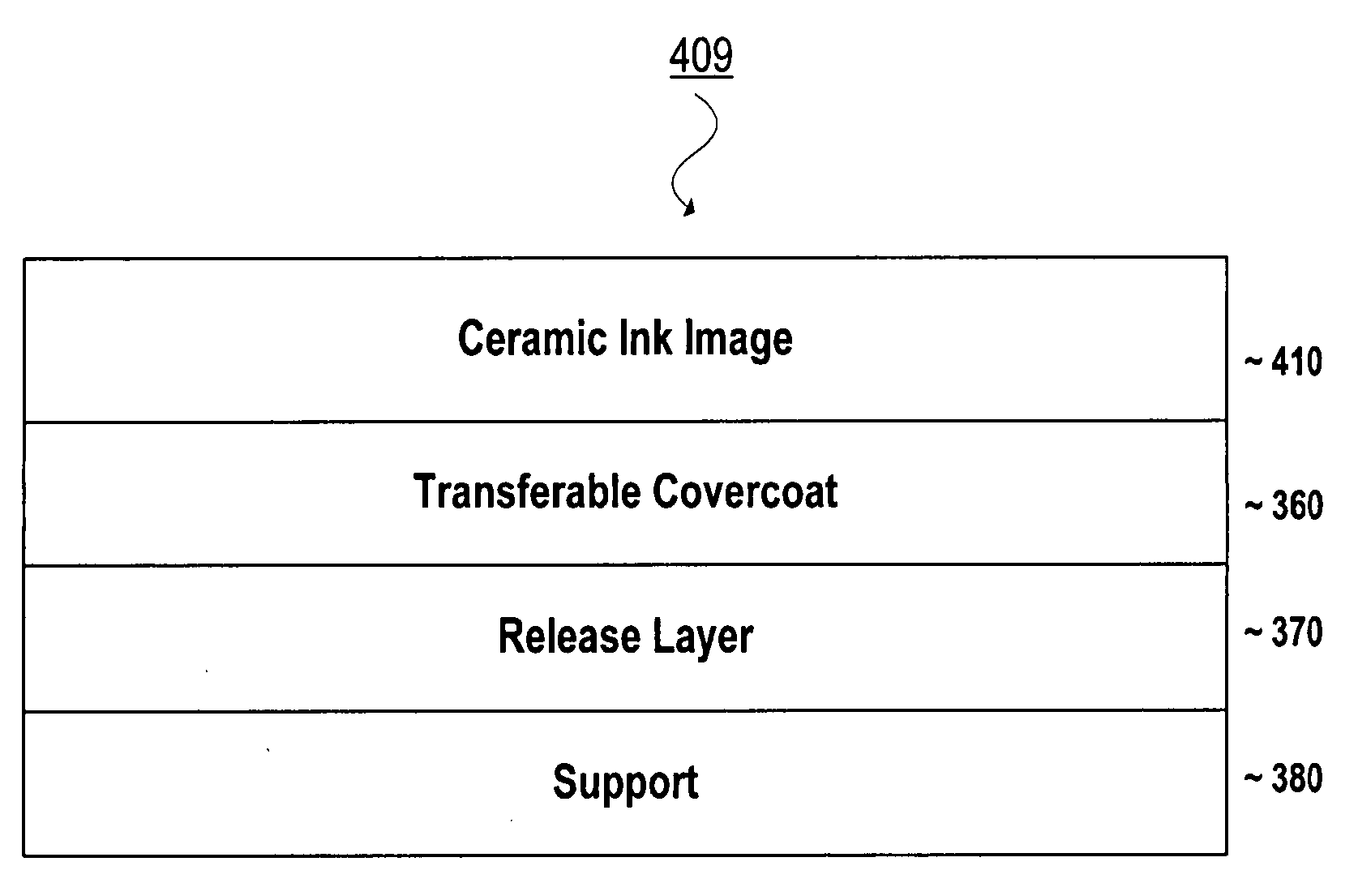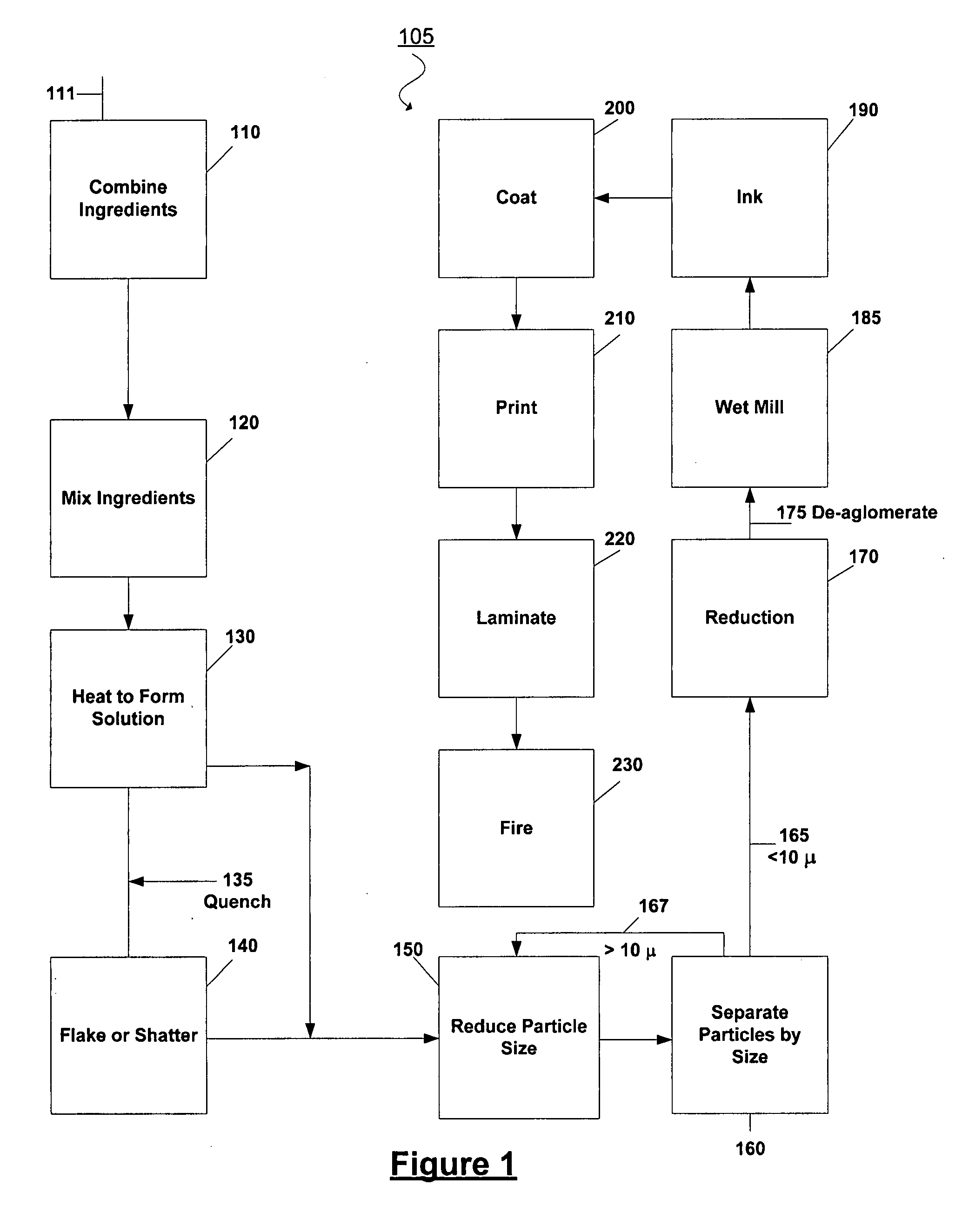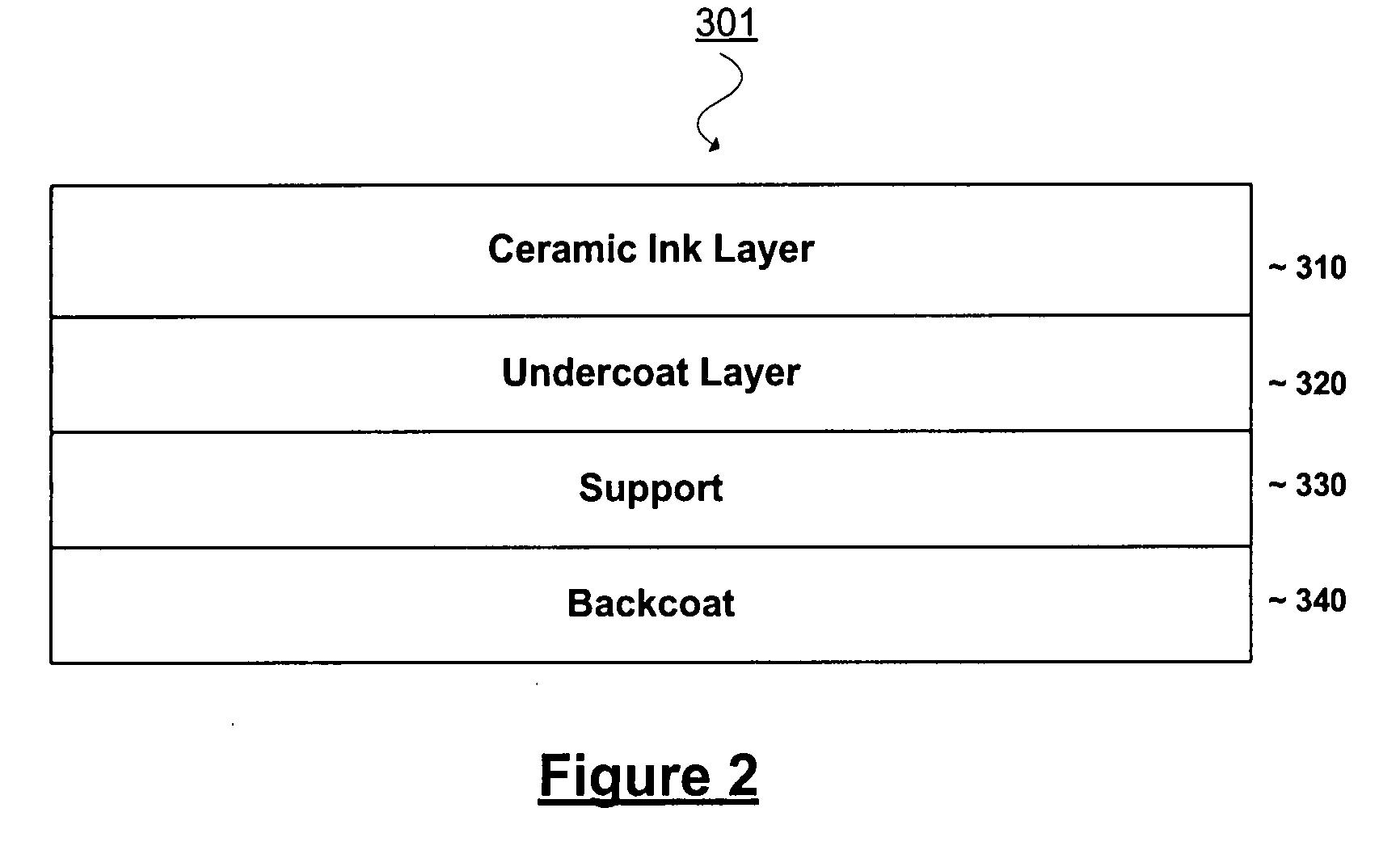Colored glass frit
a colored glass and frit technology, applied in the field of colored glass frit, can solve the problems of inability the temperature required to incorporate large quantities of tiosub>2/sub>into the glass composition is not practical, and the concentration of colored pigments is relatively low
- Summary
- Abstract
- Description
- Claims
- Application Information
AI Technical Summary
Benefits of technology
Problems solved by technology
Method used
Image
Examples
example 1
[0398] A glass batch composed of 50 mole percent SiO2, 5 mole percent Bi2O3, 15.5 mole percent B2O3, 6.5 mole percent Na2O, 1 mole percent Cu2O, 10 mole percent BaO, 5 mole percent ZnO, 3 mole percent Li2O, 1 mole percent ZrO2, 2 mole percent NiO and 1 mole percent Al2O3 was prepared and thoroughly mixed in a V-blender for 5 minutes. 1000 grams of the glass batch was transferred to a crucible made of mulite (Al3(SiO2)2) from DFC Ceramics (515 South 9th Street, Cañon City, Colo. 81212). This glass batch was placed in an electric kiln and heated to 1150° C. in air. The batch was soaked at 1150 C for 1 hour at which time the composition was brought into a liquid state and a solution of the ingredients was formed. The crucible was removed from the kiln and the molten mixture was slowly poured into a 5 gallon pail of room temperature containing water in order to form the glass frit. The frit was separated from the water by filtering through a 1 mm stainless steel screen. The flit was the...
example 2
[0399] A glass batch composed of 51 mole percent SiO2, 9.5 mole percent Bi2O3, 15.5 mole percent B2O3, 6.5 mole percent Na2O, 2 mole percent SrO, 2 mole percent ZnO, 7.5 mole percent Li2O, 1 mole percent ZrO2, 2 mole percent NiO, 2 mole percent TiO2 and 1 mole percent Al2O3 was prepared and thoroughly mixed in a V-blender for 5 minutes. 1000 grams of the glass batch was transferred to a crucible made of mulite (Al3(SiO2)2) from DFC Ceramics (515 South 9th Street, Cañon City, Colo. 81212). This glass batch was placed in an electric kiln and heated to 1100° C. in air. The batch was soaked at 1100° C. for 2 hours at which time the composition was brought into a liquid state and a solution of the ingredients was formed. The crucible was removed from the kiln and the molten mixture was slowly poured into a 5 gallon pail at room temperature containing water in order to form the glass frit. The flit was separated from the water by filtering through a 1 mm stainless steel screen. The frit w...
example 3
[0400] A glass batch composed of 53 mole percent SiO2, 9.5 mole percent Bi2O3, 15.5 mole percent B2O3, 6.5 mole percent Na2O, 2 mole percent SrO, 2 mole percent ZnO, 7.5 mole percent Li2O, 1 mole percent ZrO2, 2 mole percent NiO and 1 mole percent Al2O3 was prepared and thoroughly mixed in a V-blender for 5 minutes. 1000 grams of the glass batch was transferred to a crucible made of mulite (Al3(SiO2)2) from DFC Ceramics (515 South 9th Street, Cañon City, Colo. 81212). This glass batch was placed in an electric kiln and heated to 1200° C. in air. The batch was soaked at 1200° C. for 4 hours at which time the composition was brought into a liquid state and a solution of the ingredients was formed. The crucible was removed from the kiln and the molten mixture was slowly poured into a 5 gallon pail at room temperature containing water in order to form the glass frit. The frit was separated from the water by filtering through a 1 mm stainless steel screen. The frit was then dry in air fo...
PUM
| Property | Measurement | Unit |
|---|---|---|
| Length | aaaaa | aaaaa |
| Fraction | aaaaa | aaaaa |
| Percent by mass | aaaaa | aaaaa |
Abstract
Description
Claims
Application Information
 Login to View More
Login to View More - R&D
- Intellectual Property
- Life Sciences
- Materials
- Tech Scout
- Unparalleled Data Quality
- Higher Quality Content
- 60% Fewer Hallucinations
Browse by: Latest US Patents, China's latest patents, Technical Efficacy Thesaurus, Application Domain, Technology Topic, Popular Technical Reports.
© 2025 PatSnap. All rights reserved.Legal|Privacy policy|Modern Slavery Act Transparency Statement|Sitemap|About US| Contact US: help@patsnap.com



